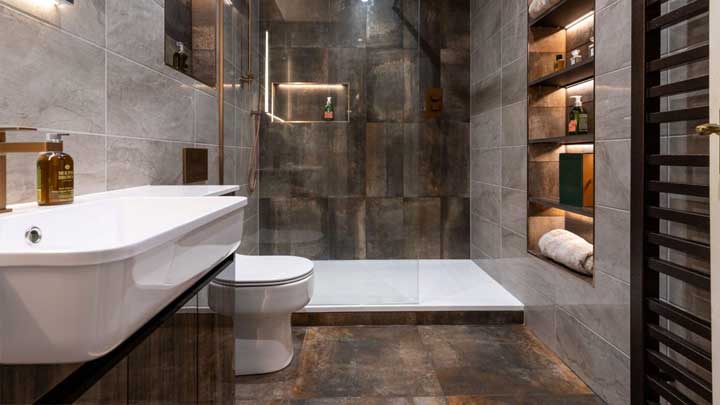
Environmental Impact of Water-Saving Toilets: A Revolution in Sustainability
Share
In our increasingly environmentally conscious world, the environmental impact of water-saving toilets is a conversation worth having. These advanced devices are not merely about water conservation; they signify a significant advancement in our approach to sustainability and resource management. For professionals in the tech sector, grasping the intricacies of these systems is essential for appreciating their vital role in our green future.

The Rise of Water-Saving Technologies
Water-saving toilets, often referred to as low-flow toilets, have become integral in contemporary homes and commercial spaces. While traditional toilets can flush up to 7 gallons of water, modern water-saving models use 1.28 gallons or less per flush. This remarkable reduction in water consumption is not only a technological breakthrough but a necessity in drought-prone areas. As stated on the Seametrics blog, utilizing water-saving devices like these can significantly decrease household water usage.
Technological Innovations Driving Change
The environmental impact of water-saving toilets is enhanced by continuous technological advancements. Contemporary designs incorporate features like dual-flush mechanisms, sensor-enabled flush controls, and pressure-assisted flushing functionality, ensuring efficient water usage while minimizing waste. For tech enthusiasts, the fusion of IoT technology in these systems is particularly captivating. Smart toilets can now track usage patterns and recommend optimal settings for efficiency, making them a perfect fit for modern eco-conscious households.
Dual-Flush Systems: A Win-Win Solution
Offering two flushing options, dual-flush toilets are designed for maximum efficiency: a full flush for solid waste and a lighter flush for liquid waste. This straightforward yet effective innovation illustrates how technology can effectively align with environmental needs. According to Home Water Works, dual-flush systems can reduce water usage by as much as 68% compared to conventional toilets.
Economic and Environmental Benefits
The economic advantages of water-saving toilets are nothing short of impressive. By lowering water bills, these systems prove to be an economically sound choice for both homeowners and businesses. Additionally, the reduced demand for water contributes to a diminished ecological footprint for water treatment plants.
From an environmental standpoint, the drop in water consumption lessens pressure on local water resources and ecosystems, which is essential in regions grappling with drought or limited water supply. By conserving water, we help safeguard this crucial resource for future generations.
Challenges and Considerations
While the advantages are clear, the transition to water-saving toilets does present some challenges. The upfront installation costs may exceed those of traditional toilets, and users might face an adjustment period as they adapt to new flushing mechanisms. Still, the long-term gains far outweigh these initial barriers. For anyone interested in further details, this guide provides valuable insights into installing these eco-friendly solutions.
The Future of Water Conservation
Looking forward, the role of water-saving toilets in water conservation is marking a promising trajectory. As technology evolves, we can anticipate even more efficient systems that harness advanced analytics and connectivity, optimizing both user convenience and conservation strategies.
Integrating Water-Saving Toilets with Smart Home Systems
For technology experts, the integration of water-saving toilets within smart home frameworks opens doors to exciting new possibilities. By linking these toilets to a central smart hub, homeowners can track water usage in real-time, receive maintenance notifications, and automate flushing settings based on usage habits. This integration represents a fascinating next step in the world of sustainable home technology.
Conclusion
The environmental impact of water-saving toilets is profound, heralding a future where technology and sustainability coexist harmoniously. For tech enthusiasts, these advanced systems are not only a chance to contribute to a greener planet but also an opportunity to leverage the latest in technological innovations. As we increasingly recognize the importance of environmental sustainability, adopting water-saving toilets is not merely a trend but an essential step towards a sustainable future.

Frequently Asked Questions
How do water-saving toilets contribute to sustainability?
Water-saving toilets significantly decrease water usage per flush when compared to traditional models, relieving pressure on water treatment facilities and aiding in preserving precious water resources.
What are the main features of modern water-saving toilets?
Common features of modern water-saving toilets include dual-flush systems, pressure-assisted flushing, and interactive controls. Many of the latest models are also designed to connect with smart home systems for efficient monitoring.
Are water-saving toilets more expensive to install?
The initial installation cost of water-saving toilets can be higher than traditional options; however, the long-term savings in water bills and associated environmental benefits render them a wise investment. Helpful resources such as How Stuff Works provide essential installation guidance.
Moreover, to further boost water conservation efforts, consider exploring high-efficiency toilets for your home. You may also find information on energy-efficient gadgets beneficial. Lastly, this article sheds light on how high-efficiency toilets minimize water usage.
This article contains affiliate links. We may earn a commission at no extra cost to you.
